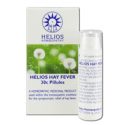 Helios Hay Fever combination 30c
Helios Hay Fever combination 30c
Allium cepa, Euphrasia and Sabadilla are combined to form a homeopathic medicinal product used within the homeopathic tradition for the symptomatic relief of Hay Fever.
 Allium Cepa
Allium Cepa
symptoms are characterized by a strong burning sensation from the nose and eyes accompanied by a watery discharge. The eyes are sensitive to light, often red and irritated, while the nose can become red and sore from burning, corrosive mucus. There can be violent sneezing, the voice can be hoarse and there may be a hacking cough.
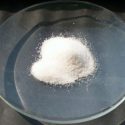 Arsenicum album
Arsenicum album
is indicated in people with frequent sneezing and a blocked nose alternating with a watery discharge. Symptoms are worse outside and better for staying indoors and keeping warm. There can be inflammation of the eyes with burning and swelling, relieved by warm bathing. The right side is generally more affected than the left and there can be a marked worsening of symptoms during the night, particularly on lying down
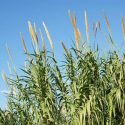 Arundo
Arundo
symptoms begin with burning and itching of the roof of the mouth and the nostrils, sometimes with pain at the root of the nose. Initially the nose can discharge clear mucus that can then turn green and slimy with lots of sneezing.
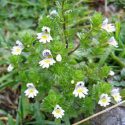 Euphrasia
Euphrasia
has a long history of traditional use for eye symptoms. It is excellent for very watery eyes when the patient may feel the need to wipe or rub them constantly. The eyelids can swell up and there can be a thick, infected discharge from the eye itself. Often there is a sensation of a foreign body (such as a grain of sand) in the eyes and they can become very gummed up and sore. The nasal and throat symptoms are less marked but include watery mucus, which is easily discharged. Symptoms are worse for sunlight, at night, for windy weather and inside and better for cool, open air. Euphrasia tincture can also be diluted and used as an eye bath to soothe sore eyes.
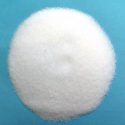 Natrum muriaticum
Natrum muriaticum
discharges have the consistency of raw egg white. The nasal discharge is usually white or clear and watery and can be extremely profuse. There is often repeated, violent sneezing – especially in the mornings, a loss of smell or taste and itching in the nose. The eyes can be watery and the throat can be dry and sore. Hay fever responding to this remedy can often be accompanied by violent, pulsating headaches made much worse by the heat of the sun, or by increased emotional sensitivity.
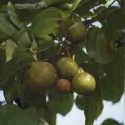 Nux vomica
Nux vomica
has a theme of ‘irritability’ that can be seen on the physical or emotional level. The person who needs this remedy may be cross or oversensitive and have acute sensitivity to the slightest odour or particle of pollen. There can be a very stuffed up nose in alternating nostrils, intense itching of the ears, nose and eyes and the unsatisfied urge to sneeze. The throat can feel rough and dry and, if the hay fever continues, the patient can experience queasiness. Symptoms are worse in the morning, for stimulants such as coffee or alcohol, for strong smells, for becoming angered. There can be improvement from a short sleep, for eating or a warm drink.
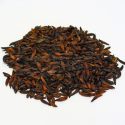 Sabadilla
Sabadilla
symptoms are most often indicated during the early spring or at harvest time. There can be persistent sneezing, transparent mucus and an itchy, stuffed up nose. The eyes can water in the open air, from sunlight or whilst sneezing. Symptoms are also worse for cold air and usually improve from eating warm food and drink or from keeping warm.
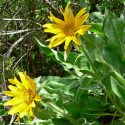 Wyethia
Wyethia
Intolerable itching felt on the roof of the mouth and behind the nose, sometimes extending into the throat and ears. Irritable throat with dry cough. Everything in the head feels dry and irritated, but the nose may still be runny.
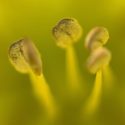 Mix Pollens and Grasses
Mix Pollens and Grasses
A combination made using a variety of pollens from plants, trees and various grasses which is often used in conjunction with a hayfever combination, on its own, or with any other indicated remedy.
